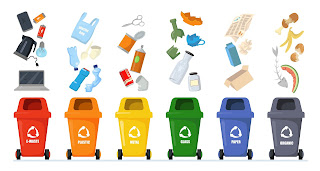Redesigning Waste: Practical Textile Waste Solutions for a Sustainable Future
The global fashion and textile industries are responsible for an enormous volume of waste—over 92 million tons of textiles are discarded worldwide every year. As environmental awareness grows, both individuals and businesses are searching for effective textile waste solutions that align with the principles of sustainability, resource efficiency, and corporate responsibility.
Understanding the Textile Waste Problem
Textile waste occurs across the entire lifecycle of a garment—from manufacturing offcuts and overstock inventory to post-consumer disposal. The fashion industry, particularly the fast fashion sector, accelerates this problem by producing high volumes of inexpensive clothing designed for short-term use.
Unfortunately, most discarded textiles are either incinerated or sent to landfills, where synthetic fibers such as polyester can take up to 200 years to decompose. During this time, they release harmful chemicals and greenhouse gases into the environment. Even natural fabrics like cotton, when treated with dyes and finishes, pose disposal challenges. The result is a textile waste crisis that requires innovative, scalable responses.
Innovation in Recycling and Material Recovery
Among the most promising textile waste solutions are advancements in recycling technologies. Fiber-to-fiber recycling is now making it possible to break down old textiles and regenerate them into new yarns without significant loss in quality. These processes include both mechanical methods (shredding and re-spinning) and chemical methods (dissolving fibers into reusable polymers).
However, textile recycling still faces significant barriers, especially with blended fabrics and garments treated with chemical finishes. Ongoing research is helping improve fabric sorting technology and the ability to process mixed materials, making textile recycling more efficient and commercially viable.
The Power of Reuse and Recommerce
Another key solution lies in extending the life of garments through reuse and recommerce. Clothing rental platforms, resale marketplaces, and corporate take-back programs are making it easier than ever for consumers and businesses to circulate products longer before disposal. The reuse model reduces the demand for virgin materials and lessens the environmental footprint of fashion production.
Donating excess or unused clothing to charitable organizations and shelters is another impactful route—especially when items are still in good condition. This not only helps those in need but also reduces the volume of textiles that would otherwise go to waste.
Creative Upcycling and Repurposing
Upcycling is gaining momentum as a highly creative textile waste solution. By transforming old or damaged garments into entirely new products, upcycling preserves fabric value and minimizes the need for raw materials. For instance, scraps of denim are now being remade into tote bags, rugs, or patchwork jackets.
This approach is especially effective for materials that are not easily recyclable or donatable, including branded items and promotional wear. It also adds value to the final product, as upcycled goods are often seen as unique and artisanal—qualities that resonate with sustainability-minded consumers.
Policy, Responsibility, and Systemic Change
For textile waste management to become mainstream, there must be stronger policies and regulations that incentivize responsible production and end-of-life practices. Extended Producer Responsibility (EPR) laws, eco-design standards, and government-backed recycling incentives are key to driving industry-wide change.
Companies must also take internal responsibility by auditing their apparel inventory, identifying waste points, and working with expert partners to implement sustainable disposal and reuse strategies.

How SwagCycle Helps Brands with Textile Waste Solutions
One such partner is SwagCycle, a company specializing in environmentally responsible disposal of surplus branded merchandise. SwagCycle offers businesses a seamless way to manage outdated, excess, or logoed apparel through donation, recycling, or upcycling programs. These services are particularly valuable for corporations that deal with branded items which cannot be publicly resold or donated due to trademark or security concerns.
By aligning environmental stewardship with brand protection, SwagCycle delivers customized textile waste solutions that reduce landfill impact and promote circularity. Their mission is simple: to help companies make sustainability part of their brand story—while doing right by the planet and people.




Comments
Post a Comment